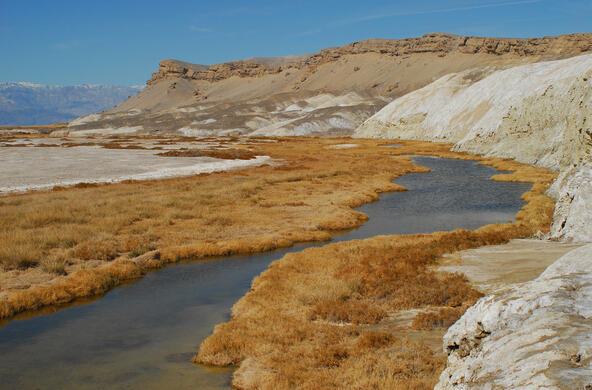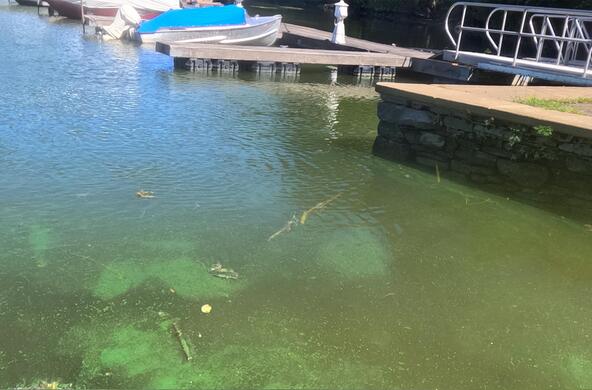For those of you who have taken the train trip to New York City, I hope you have noticed the large and varied wetlands on the east side of the tracks. Tides connect most of these wetlands to the Hudson River's main channel. This means the water level in these wetlands rises and falls almost as fast as it does in the mainstream.The Hudson River experiences two high tides and two ebb tides each day. Water rises and falls about a yard with each. These tides cause water to move back and forth between the wetlands and the river. The moving water carries many types of small plants and animals, including fishes who enter the wetlands for shelter or feeding.
Along with the water, tides move nutrients and dissolved oxygen into the river's wetlands. Dissolved oxygen is essential for fish and other aquatic life. But excess nutrients can be a problem. Nitrogen, especially in the form of nitrate, can reduce water quality. Nitrate originates from fertilizer and sewage pollution and can be transported long distances in the water.
In the Gulf of Mexico and the Long Island Sound, nitrate pollution has caused harmful algal blooms and fish kills. To protect the Hudson River, efforts are under way to manage how much nitrate enters our waterways. Fortunately for us, the Hudson River's wetlands are effective at removing nitrate from tidal waters that enter marshes.
Research done on water entering and leaving these wetlands has found they may remove 75 percent of nitrate during the summer growing season. This is done through the activity of certain plants and microbes that live in higher elevation marsh habitat that is less frequently flooded. Species such as cattails and common reeds play an essential role in removing nitrate pollution, diminishing potentially harmful effects downstream.
The protective effects of our wetlands may be compromised by climate change. New York Harbor's sea level has risen more than 15 inches in the past 150 years. And conservative estimates of climate change predict that waters will rise an additional 6-12 inches by 2020. We don't know how the Hudson River's wetlands will fare under the new flooding regime.
There are two options for wetlands to keep pace with rising water levels. Both take decades to play out. First, wetlands can migrate upslope as water levels rise. Given the steep slopes surrounding many of the Hudson's tidal wetlands, and the fact there may be residences and other structures at the upland edge of these wetlands, movement inland is probably not a viable solution for most sites.Alternatively, wetlands can accumulate sediment particles that settle out of high tide water, thereby growing vertically to keep pace with sea level rise. A significant unknown is whether the Hudson's waters carry enough material to supply the mass needed for rapid vertical growth of its wetlands. Current research is examining this question.
What we do know is that if the Hudson River loses its wetlands, or if their plant communities change dramatically, we will also lose valuable ecological processes. This, in turn, could result in more nitrate pollution downstream.
Sea-level rise does not happen overnight. We are fortunate to have a window of opportunity to explore our options. But research needs to happen now if we are to ensure the preservation of these habitats and the often-overlooked services they provide for the Hudson River.







